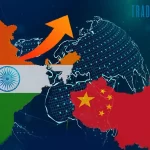India’s demographic advantage, with a rich demographic dividend and a substantial youthful workforce, is a key factor in its potential to outperform its Asian counterparts in economic growth. With 68% of its populace within the prime working ages of 15 to 64 and a median age of 28, India’s youthful workforce starkly contrasts China’s median age of 39. This demographic advantage fuels optimism among India’s government, experts, and business leaders. However, to fully harness this potential, it is crucial to equip the emerging workforce with the necessary skills and education for industry readiness.
The India Skills Report 2024 reveals a concerning statistic: unemployment affects nearly half of the nation’s graduates. This highlights the need to focus on skill development and education to ensure industry readiness. Despite a rise in India’s labour force participation rate over the past five years, the nature of job creation requires scrutiny. The India Employment Report 2024 further underscores this issue, pointing out that a rise in women’s labour force participation rate is primarily due to self-employment or unpaid family labour in rural locales. Over 90% of workers remain in informal employment without formal contracts, and the income for regularly salaried workers has been static or declining. These factors indicate substandard employment conditions and pervasive livelihood uncertainties, with a mere fraction of the workforce secured by employment contracts.
India’s current GDP per capita is a modest $2,850, trailing most of its Asian counterparts. The Indian government is keenly enhancing its manufacturing prowess to spur economic advancement. Initiatives such as ‘Make in India’ and ‘Skill India’ are designed to elevate the manufacturing sector’s contribution to GDP from the historical flats of 16-17% to an ambitious 25% by 2025.
While the expansion of manufacturing infrastructure and capabilities is anticipated to contribute positively to India’s GDP, it is equally critical to consider the gross value added (GVA) indicator. GVA assesses the actual output of an economy by subtracting the cost of inputs from the value of goods and services produced. Despite efforts to revitalise the sector, including the Production Linked Incentive (PLI) scheme introduced in 2020, the manufacturing sector’s share in GVA has seen little change, hovering around 16% for the past decade and inching up to just about 17% in the fiscal year 2023.
As automation advances, the value added to products by integrated services—such as research and development, product design, business services, logistics, sales, and marketing—is rising. This trend, often called the ‘servification of manufacturing,’ is a key driver of the growing interdependence between services and manufacturing. Recognising and cultivating these interconnected services is crucial for India to elevate its role in the global supply chain and hasten its economic expansion. Therefore, capital expenditure and associated subsidies should focus on enhancing the domestic contribution to value and advancing technological sophistication within the manufacturing sector.
India must implement key structural reforms within its industrial framework to enhance the integration of services into manufacturing, thereby increasing its contribution to the global supply chain. Regulators and policymakers must simplify business operations, modernise labour laws, make land acquisition more efficient, encourage small and medium-sized enterprises (MSMEs) to adopt automation and digital technologies and develop an environment that facilitates the growth of deep technology startups.
With the world’s third-largest hub of tech startups, primarily in the software sector, India has seen significant growth. A NASSCOM report indicates that in 2022, India welcomed 1,300 new active tech startups, raising the total to 25,000 and 27,000. Yet, deep-tech startups comprise less than 5% of this figure. India requires a workforce of well-educated individuals to establish deep-tech companies and ensure they have sufficient support to take calculated risks. The government and all parties involved in India’s development are committed to positioning India at the vanguard of the global manufacturing supply chain. It is now essential for all to understand that genuine economic value will be realised when India can capitalise on its strong service exports and integrate them into manufacturing to boost productivity.






